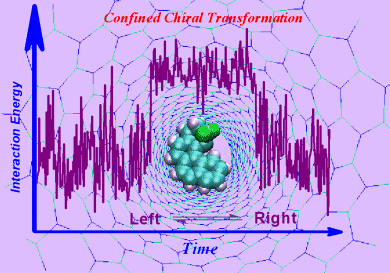The confinement of molecules inside nanoscale pores has become an important method of fabricating new structures and exploiting dynamics that do not occur in bulk systems, such as enhanced catalysis and improved stability of the native structure of proteins, new mechanisms of protein and polymer dynamics, the excellent on-off gating, and the ability to control the pumping action of permeation behavior.
However, the effect of confinement on the conformational transitions is still far from understood. H. P. Fang and R. Q. Zhang et al. from the Shanghai Institute of Applied Physics and the City University of Hong Kong, China, respectively, present an approach towards understanding conformational transition by using molecular dynamic (MD) simulations and find that Nanoscale confinement facilitates efficent chiral transition. They describe the significant implications of their findings.

- Size Dependence of Nanoscale Confinement on Chiral Transformation
Z. G. Wang, C. L. Wang, P. Xiu, W. P. Qi, Y. S. Tu, Y. M. Shen, R. H. Zhou, R. Q. Zhang, H. P. Fang,
Chem. Eur. J. 2010, 16 (22).
DOI: 10.1002/chem.200903383




